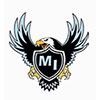Menominee Ethnobotany 02 What is Ethnobotany?
(View Complete Item Description)The students will develop an understanding of how ethnographers studied the Native American uses of plants in the Wisconsin region. They will learn specically about Menominee, Ojibwe, Potawatomi, and Meskwaki tribal uses of plants.
Material Type: Lesson Plan




















